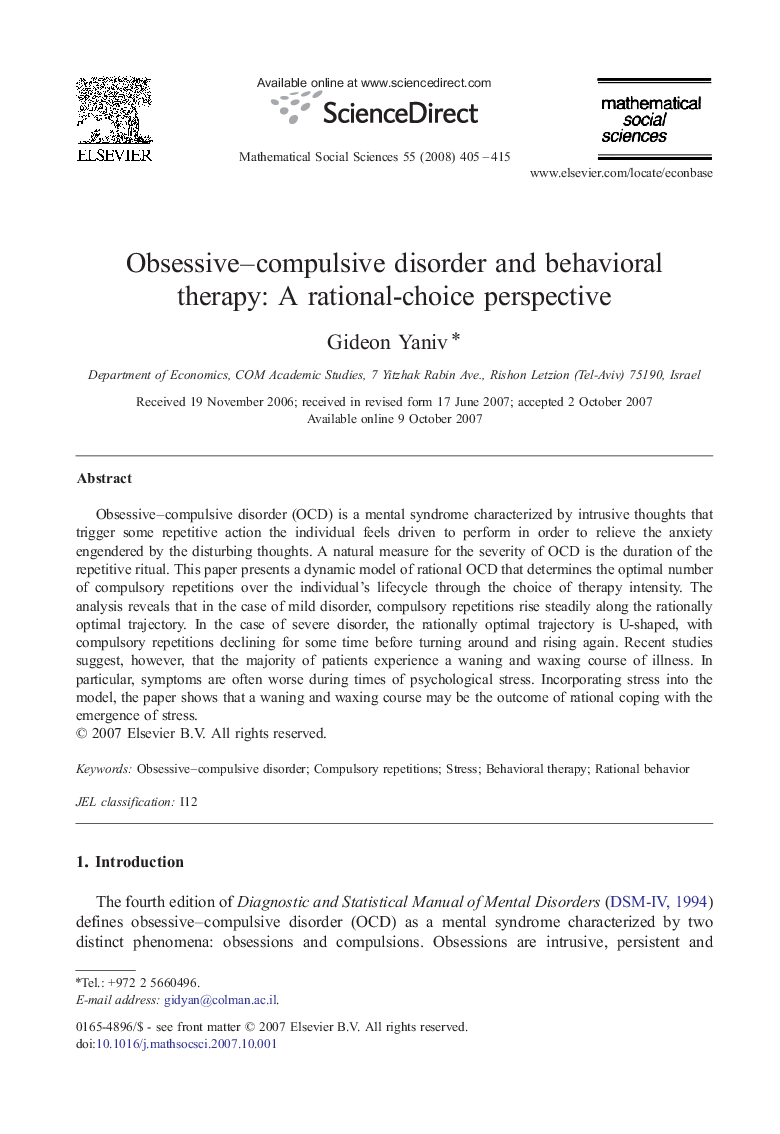| Article ID | Journal | Published Year | Pages | File Type |
|---|---|---|---|---|
| 972114 | Mathematical Social Sciences | 2008 | 11 Pages |
Obsessive–compulsive disorder (OCD) is a mental syndrome characterized by intrusive thoughts that trigger some repetitive action the individual feels driven to perform in order to relieve the anxiety engendered by the disturbing thoughts. A natural measure for the severity of OCD is the duration of the repetitive ritual. This paper presents a dynamic model of rational OCD that determines the optimal number of compulsory repetitions over the individual's lifecycle through the choice of therapy intensity. The analysis reveals that in the case of mild disorder, compulsory repetitions rise steadily along the rationally optimal trajectory. In the case of severe disorder, the rationally optimal trajectory is U-shaped, with compulsory repetitions declining for some time before turning around and rising again. Recent studies suggest, however, that the majority of patients experience a waning and waxing course of illness. In particular, symptoms are often worse during times of psychological stress. Incorporating stress into the model, the paper shows that a waning and waxing course may be the outcome of rational coping with the emergence of stress.
